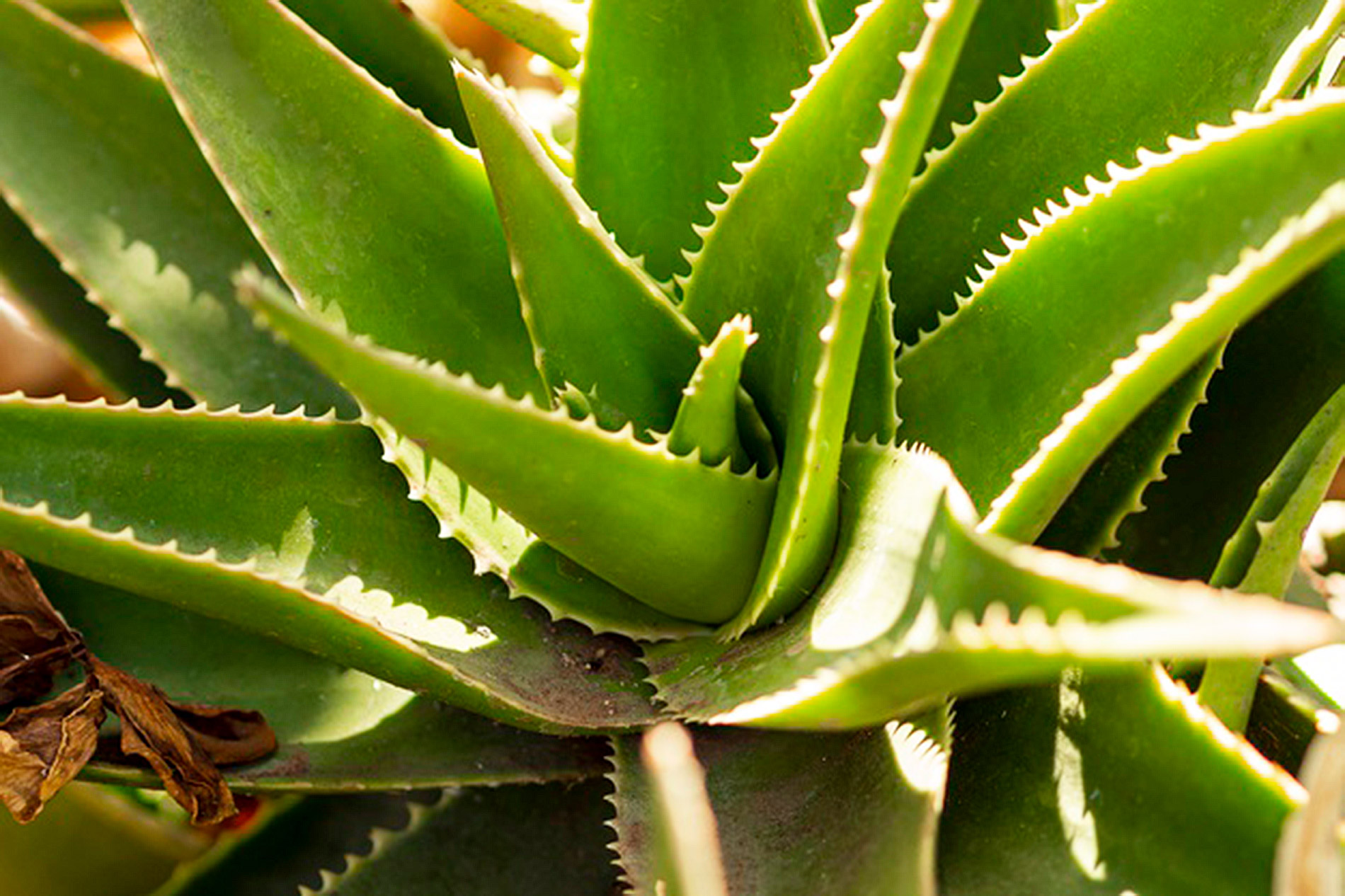Local Storage seems to be disabled in your browser.
For the best experience on our site, be sure to turn on Local Storage in your browser.
How many species of Aloe are there?

At present, there are more than 500 different species of Aloe, with very different sizes and aspects.
Aloe vera is undoubtedly one of the most important medicinal plants in the world, being used in the pharmaceutical, cosmetic and food industries.
However, in view of the large number of Aloe species, it is surprising that little research has been done to reveal the commercial potential of other Aloe species. In fact, Aloe arborescens Mill. was used to treat nuclear radiation burns from the atomic bomb explosion on Hiroshima during World War II, and is currently under commercial development in Japan and Italy as a possible alternative source of gel products.
Some Aloe species are very popular indoor plants because they are versatile and able to thrive indoors without much care. This is beneficial because living plants like aloe can improve air quality and help promote a healthier indoor environment.
In this article we will explain some of the ways in which 12 species of Aloe can benefit health or our environment.
|
|
1. Arborescens Aloe Often called "aloe candelabra", arborescent aloe can grow up to 10 feet tall and become as big as a small tree. Vibrant red-orange cylindrical flowers rise high on the leaves of the plant to give it a distinctive look. As with many aloe plants, researchers report a variety of healing properties. Aloe arborescens helps in the healing of wounds in animals and shows action against harmful organisms. A study from Italy also showed that when used as nutrient therapy, it helps the immune system and other health benefits. |
|
|
2. Aloe Ferox Aloe ferox is also known as "aloe de capa", "aloe rojo" or "aloe de grifo". Another aloe-like plant that can reach 10 feet in height, its red flowers grow 2 to 4 feet above its leaves. Extracts of this plant have natural laxative properties and studies show that it is effective against occasional constipation. Researchers have found that seed oil contains high levels of linoleic, stearic and oleic fatty acids used in many cosmetics and can offer a natural way to nourish and rejuvenate the skin. |
|
|
3. Aloe Striata This small stemless aloe plant is called "coral aloe" because of the pink tint of its leaves. Aloe striata has wide, smooth leaves. This is far from the "teeth", or small sharp projections, found in many varieties of aloe. This particular species survives in hot, dry environments and is known for its ability to store large amounts of water. Research suggests it may support digestion. |
|
|
4. Aloe Aristata Stemless aloe, also called "lace aloe" and "guinea fowl aloe", is known for its intense green color, serrated toothed leaves and unique white spots. It resembles much another common succulent, haworthia, and is often confused with this distant cousin. Its large orange flowers attract a wide variety of birds and insects, especially bees, which promote the health and longevity of this plant and other plants in its immediate area. This makes it another excellent garden plant, requiring little care and thriving in warm, cool climates. Aloe aristata also has therapeutic roots, as it is used for wound healing in Ayurveda. |
|
|
5. Aloe Marlothii Known as "mountain aloe", aloe marlothii can reach heights of up to 6 meters. It has robust, greyish-green leaves that can be up to 1.5 metres long and grow from a central "head". Their flowers vary in color from orange to yellow and to a vibrant red. A recent study found that aloe marlothii can be used to moisturize the skin and can promote overall skin health in a manner similar to aloe vera. |
|
|
6. Aloe Polyphylla This species of Aloe is highly coveted for its beauty, its excessive use as an ornamental plant has greatly overloaded this particular aloe and has led to a severe decline in its population. Often referred to as "spiral aloe", this plant has a distinct 5-point growth pattern, with flowers of different shades of red and leaves with jagged edges and sharp tips. |
|
|
7. Aloe Plicatilis
Another aloe that has been almost exhausted by its widespread use as decoration, aloe plicatilis is known for its fan-shaped leaves that inspired its common name of "fan aloe". This particular species can reach more than 10 feet in height. Today, this plant is protected from common uses, such as becoming an ingredient in cosmetic or therapeutic products. This is because aloe plicatilis is now an endangered species. |
|
|
8. Aloe dicotoma Also called "tremor tree", it is a species of tall Aloe that grows tall and branches out like a tree. Once frequently used in landscaping to provide support for the surrounding environment, this Aloe was labeled "Critically Endangered" in 2011. |
|
|
9. Aloe Ciliaris Aloe ciliaris, often referred to as "common climbing aloe", is a slim, hardy plant known for its incredibly fast growth. It also has tubular red flowers and soft, hairy teeth. Aloe ciliaris is an Aloe that works well in a garden, as it is known to attract bees and birds that enrich and support the life of other plants around it. |
|
|
10. Aloe Maculata The sap of aloe maculata, called "aloe vera soap", forms a soapy foam in the water. This aloe species can be recognized by its long tubular flowers that vary in color from red and green with spots that resemble the letter "H". A unique attribute of this particular species of Aloe is that its pollen generation can be increased by smoke. This makes aloe maculata a popular choice among gardeners who are able to utilize the unique ability of this plant to maintain its closest environment. |
|
|
11. Aloe Humilis The aloe humis plant has long, narrow triangular leaves with white teeth. Its stem also produces bunches of red, orange and yellow flowers. The fresh gel of this particular plant has been shown to relieve sunburn, as well as popular gels made from another popular aloe, aloe vera. |
|
|
12. Aloe Barberae This "tree aloe" is often crossed with the aloe dichotoma to produce a popular hybrid called "Aloe X Hercules". The aloe barberae itself grows over 50 feet tall, has pink flowers with green tips and can be used to support human health in several different ways. Studies show that it is powerful against harmful organisms and has ultra-soothing properties. |
Sources:
- Characterisation of gels from different Aloe spp. as antifungal treatment: Potential crops for industrial applications
P.J. Zapataa, D. Navarroa, F. Guilléna, S. Castillo a, D. Martínez-Romeroa, D. Valeroa, M. Serranob,
Industrial Crops and Products 42 (2013)
- Chemistry of Aloe Species
E. Dagne, D. Bistrat, A. Vilijoen, B. E. Van Wyk
Current Organic Chemistry 2000, 4, 1055 - 1078

